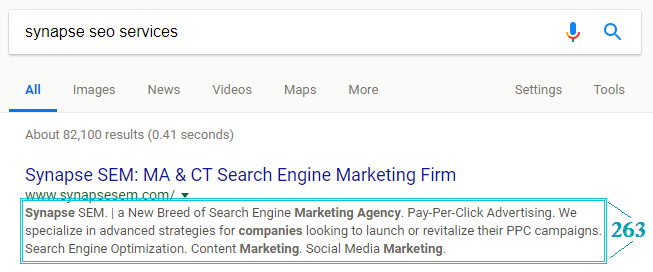A Year in Review: Google Algorithm Updates That Affected Your SEO in 2017
***March 2018 Update: During the weekend of March 9, 2018, Google rolled out a “broad core algorithm update,” which doesn’t happen every day. Older, major algorithm updates like Panda, for example, are now part of Google’s core algorithm. Google has yet to provide details of the March 2018 update, however, did leave us with this:
“As with any update, some sites may note drops or gains. There’s nothing wrong with pages that may now perform less well. Instead, it’s that changes to our systems are benefiting pages that were previously under-rewarded.
There’s no “fix” for pages that may perform less well other than to remain focused on building great content. Over time, it may be that your content may rise relative to other pages.”
Did your website experience a change in organic rankings or traffic over the last couple weeks? Let us know!
Google is quite the beast. It’s updating every day, several times a day, in efforts to serve users quality and relevant search results. In fact, experts say that Google changes its search algorithm between 500 and 600 times a year – aimed at fostering a better world wide web.
Most of the time, Google’s algorithm updates are minor – they update a bug, weed out spam, penalize aggressive ads. Occasionally, however, Google will roll out a major (or, at the least, noticeably impactful) algorithm update. Sometimes these updates are so big they get big beastly names like “Penguin,” “Panda,” and “Hummingbird.” Other times, they go unnamed and under the radar, despite having a notable effect on search. This was the case – at least five separate times – in 2017.
If you noticed a considerable dip in rankings or a significant spike in traffic last year, there’s a very good chance that Google played a part. Keep reading to see the Google algorithm updates of 2017!
January 10, 2017: Intrusive Interstitial Penalty (Confirmed)
At the start of 2017, Google rolled out a penalty against mobile webpages using aggressive interstitials (i.e. “pop-ups”) that might damage the user experience on mobile devices. This type of pop-up ad, they explained, can be especially “problematic on mobile devices where screens are often smaller.”
Google warned, “Pages where content is not easily accessible to a user on the transition from the mobile search results may not rank as highly.” The penalty de-prioritized sites that had:
- A pop-up covering the main content of the page
- Pop-ups users must dismiss before accessing desired content
- An above-fold layout looking similar to an “intrusive” interstitial
March 7, 2017: “Fred” (Confirmed)
Just a month after the unnamed updates occurred, there was chatter among the SEO community that another Google algorithm update rolled out. Gary Illyes, Google’s own webmaster trends analyst, jokingly nicknamed the update “Fred,” but refused to share any specifics.
The only insight Google gave us into the Fred update was that it affected sites violating Google’s Webmaster Quality Guidelines. Studies, however, showed that Fred mostly concerned websites with ad-heavy, low-value content that was produced only to generate ad or affiliate revenue.
October 17, 2017: HTTPS Warnings (Confirmed)
We’ve long known that Google prefers secure, HTTPS websites. Google uses SSL certificates as a ranking signal, meaning that secure/HTTPS sites have an advantage in the organic search results. In mid-April 2017, MOZ found that half of Google’s page-one organic listings were secure/HTTPS. By the end of 2017, 75 percent of page-one results were secured with SSL.
Thus comes October 2017’s update, one of Google’s many efforts to move towards a more secure web. In part with the launch of Chrome 62, Google began warning users of non-secure pages and forms, showing an aggressive “NOT SECURE” notification when Chrome users enter text into a form-field on an HTTP page.
November 30, 2017: Meta Description Length Increase (Confirmed)
My personal favorite Google algorithm update of 2017 happened late-November, when I could finally kiss goodbye that inhibiting 160-character-limit. Meta descriptions – those snippets of text you see under each link on the organic SERP – can now be up to 300 characters. The average snippet is now about 230 characters, and exact length restrictions have yet to be confirmed.
It may seem like a small update, but this lift in character-length will mean more real estate for brands on Google’s SERP. Businesses now have more space to describe their pages/products/services and convince prospective customers to click. This could mean greater CTRs and SEO traffic to your website.

Mid-December 2017: “Maccabees” (Confirmed)
In December 2017, around the holiday season, the SEO world was shaken by another Google algorithm update – or as Google would say, a series of “many and minor” updates to its algorithm. Unofficially called “Maccabees,” these were quality updates – Google knocked out more “doorway pages” from the SERP and penalized sites with few pages/thin content. Doorway pages are low-quality webpages created with the sole intent of ranking for a given keyword. Typically, they lead users to in-between, irrelevant pages that aren’t as useful as the desired destination – acting as a “door” between users and content.
What About 2018? Mobile-First (Confirmed)
Mobile is not new to search engine optimization – Google has been moving towards a mobile-first index for over a year. Rest assured, however, that mobile will become an even bigger focus in 2018. Last month, Google officially announced that a new ranking factor will be coming forth this July. They are calling it the “Speed Update,” designed to demote the organic rankings of extremely slow mobile pages.
If you have a responsive site that serves content quickly, you should be in good shape. However, we recommend running Google’s (newly updated) PageSpeed Insights tool to check your website’s mobile load times and mobile friendliness, to avoid any potential rankings loss.
Without a doubt, 2017 was a year of content quality. In addition to the five Google algorithm updates listed above, there seemed to be near-monthly algorithmic, yet unnamed and unconfirmed, updates happening last year. We saw it in early February, mid-May, and again in August – high-quality, content-equipped websites gained SEO visibility, and websites with deceptive advertising, low-quality content, thin category pages, and negative UX experiences fell off.
Those ‘He-Who-Must-Not-Be-Named’ updates, though, are happening all the time. They are Google’s way of building a better web, and something that all online businesses, marketing directors, and SEOs must acclimate to. Google’s own Gary Illyes says 95 percent of Google algorithm updates are not actionable. But if you have a great website with fresh, relevant, quality, and optimized content, you will see results:
“Basically, if you publish high quality content that is highly cited on the Internet – and I’m not talking about just links, but also mentions on social networks and people talking about your branding… Then you are doing great. And fluctuations will always happen to your traffic. We can’t help that; it would be really weird if there wasn’t fluctuation, because that would mean we don’t change.”
For business and marketing executives, knowing Google algorithm updates as they occur can help explain changes in organic rankings and traffic – significant spikes, drastic dips, a slow and painful downward spiral onto page 6 – and help you take steps towards improving your SEO.
To learn how Synapse SEM can help improve your search engine optimization, complete our contact form or call us at 781-591-0752.




